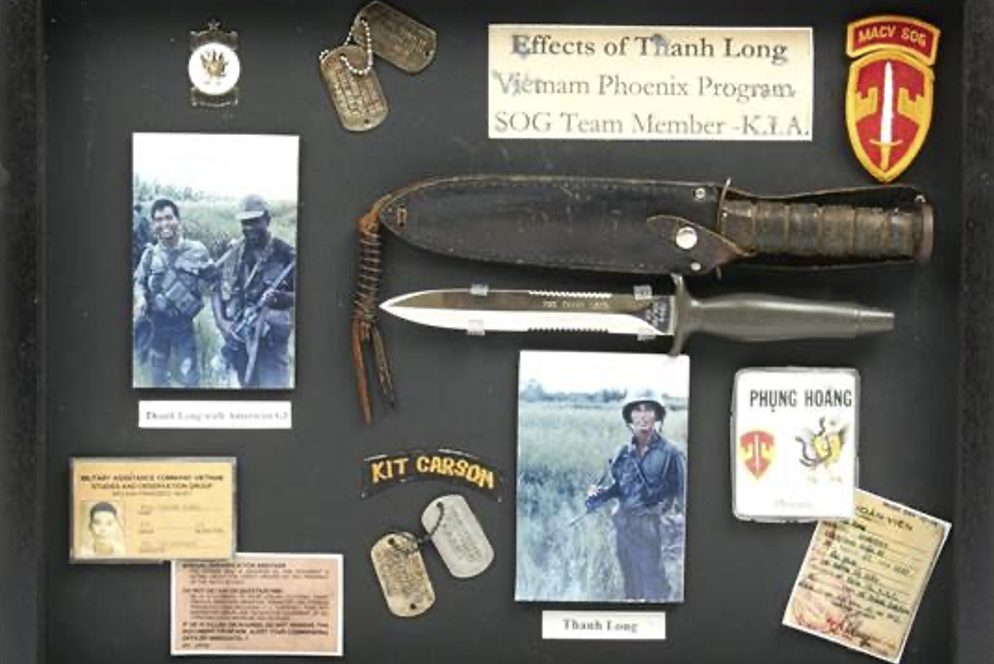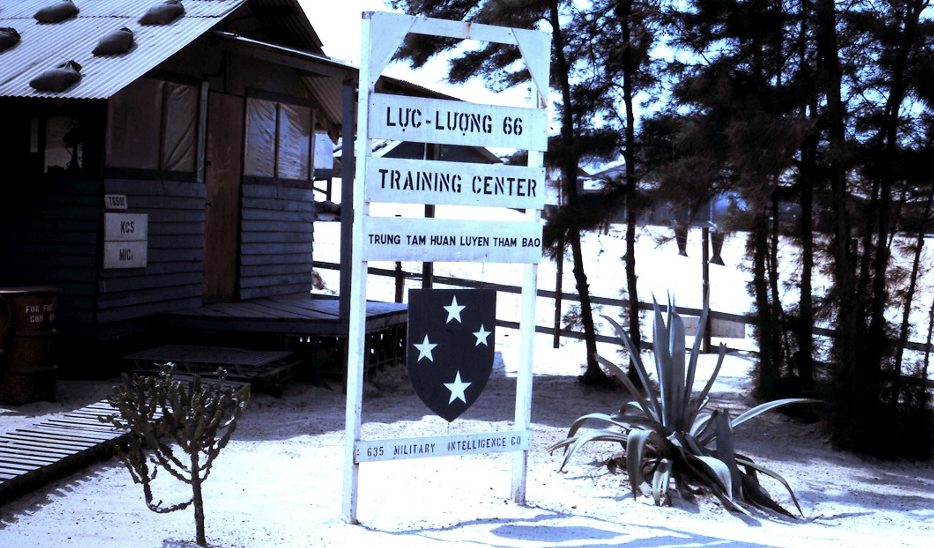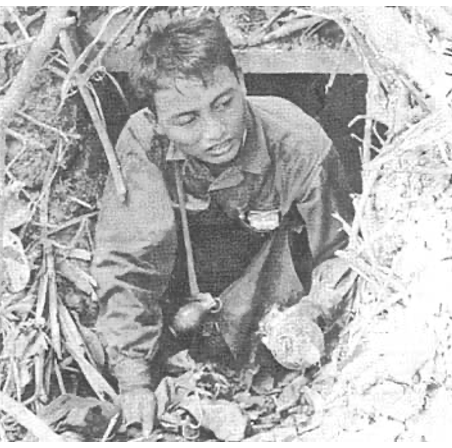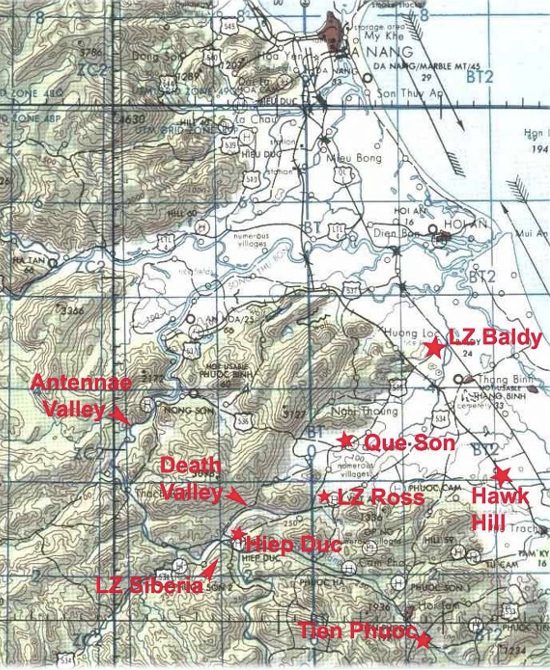
Once back at Division Headquarters, I was assigned to lead the Americal’s “Kit Carson Scouts” program. My “soldiers” were former NVA (The North Vietnamese Army or as they were also called the PAVN {People’s Army of Vietnam} was the main professional body of soldiers fighting against the Americans and Free World Forces) and VC (Viet Cong or National Liberation Front guerrillas operating inside the Republic of Vietnam; aka South Vietnam) combatants who had defected but now worked for US units as guides and intelligence sources.

Eleven Kit Carson Scouts were assigned to the Kit Carson Scout Headquarters in the Americal Division with 20 – 25 more assigned to combat units in the field. Four had been NVA regulars and seven had been with the VC. The seven VC spoke functional English, while the four NVA spoke excellent English, probably better than mine. Two of the NVA defectors had gone to college in England, one in South Korea, and one in the US. One was a colonel, technically outranking me while the other three NVA were enlisted. All seven former VC were enlisted. Two of these VC “scouts” had been sappers, whose job it was to get inside American compounds, usually by patiently and stealthily slithering through the wire protecting an American firebase or compound. The remaining five had been rice carriers or ammo carriers, who carried heavy loads down through Laos and Cambodia on the Ho Chi Minh Trail. One of the sappers was excellent at his work. The other sapper was not very good. I always figured he defected because he knew eventually, he was going to blow himself up.
As indicated earlier, these “scouts” were attached to American combat units in the field to identify possible booby-traps, potential ambushes, and advise American units on enemy tactics. Some American units were glad to have them, and some never trusted them; however, I received far more positive reports on their work than negative reports from Americal unit commanders. In my four months of running that program, there were no “scout.” casualties.
As an aside, I had the opportunity to demonstrate how good sappers could be to a variety of American units. I would take the better of my two former NVA sappers out to fire bases and run a live experiment. The sapper and I would arrive at a firebase or other unit area late in the afternoon and I would then offer the CO a challenge – a case of beer if the sapper could get through the defenses and wire before sunrise. The sapper would strip down to a loincloth, check out the perimeter defenses, and slowly begin crawling through the wire – slowly and patiently – moving inch by inch.
Sometimes, the Commanding Officer of the firebase would ask if I wanted them to disarm the Claymore mines before the sapper started, but I always told him no. Sometimes, it would take my guy as much as six hours, but he never failed to get through and I collected a lot of beer for the rest of the “scouts.”. After three months leading the “scouts,” I was promoted to Captain.
Another aspect of leading the “scouts” involved monthly trips to Saigon to pick up draft deferral cards for the Americal’s “scouts”. Generally, the ARVN didn’t like “scouts”, and often sent their military police out to arrest them and then draft them. After Saigon fell, I wondered what happened to all “scouts”. Nobody likes a defector, turncoat or a traitor and it’s hard to believe they wouldn’t have been slaughtered by the North Vietnamese commanders.
When my year in Vietnam was over, I rotated back to the States and was assigned to Fort Devens, Massachusetts, where I attended the Officer Cryptologic Basic Course. After graduating with honors, I was assigned to the School Brigade as a company commander of a Basic Morse Code Operator Company. After 18 months in command, I was selected to attend the Defense Intelligence Agency course in Washington, DC. I served another 7 years on active duty and then 16 more years in the reserves retiring as a Lieutenant Colonel.
Vietnam had the potential to impact soldiers negatively, both mentally and physically. That is a sad commentary; however, I chose to concentrate on the personal positives that Vietnam afforded me. I learned a lot about myself and my abilities, but also about the abilities of others. I learned the importance of trusting one’s own choice-making abilities. After all, what is life but a continuous series of having to make an “A” or “B” choice all day long about those things we encounter. I learned the advantage of being able to make instantaneous decisions and how to weigh consequences of those choices in a rapid and thoughtful manner. I learned awareness, an awareness of what is happening in one’s immediate area. I find myself utilizing this awareness even today. I consciously face the challenges surrounding me and analytically assess how to meet those challenges. Not so much in a paranoid manner, but more as a learned natural observance. I learned how to watch others in stressful situations and by their body language, many times determine how they are going to respond to any outside stimuli, which oft times determines my own reaction to those stimuli. The positives I garnered from being in an elongated stressful situation far outweigh the negatives for me. Many did not react that way after leaving the war, and to this day, so many years later, some still dwell on the negative aspects of their experiences and allow that to determine their demeanor, their attitudes, and their relationships with others…how sad for them. Almost all experiences in life, if looked at as a learning experience, can afford some semblance of positiveness. I choose to make Vietnam such an experience.
*a person in a position of authority, especially an employer or a commanding officer



Thanks Denny. These are great.
Welcome from a golf friend. The November get togethers are awesome.
Thanks, Denny, I appreciate the inside informative story. While stationed at Cam Rahn Bay in 1972 I was a football field away from the devastating effects of a sapper attack against a group of GI’s watching an outdoor movie in which about 20-25 were killed or wounded in the attack. Like you, I too have sometimes wondered what happened to some of the Vietnamese I came in contact with during my time in Country.
Thanks, Ray. Shared experiences and thoughts are so very helpful in the moving on. God bless! I just became a certified lay speaker in the UMC.
Denny,
I found this extremely interesting , my AO was your AO only a year later. I served at Thang Binh District as the Deputy Senior Advisor from Oct 1971 until Feb 1972, Thang Binh was at the mouth of the Que Son Valley in Quang Tin Province. Then I moved down to the Province Headquarters at Tam Ky as the senior RF/PF advisor for the province just before the Easter Offensive. The opening move of the NVA in Quang Tin was to assault and secure LZ West with a sapper regiment. The 402nd, 409th and the K-5(?) sapper battalions took part. Much later, maybe July, our compound in Tam Ky was targeted by the 409th.
Mike Maasberg
Wow! Thanks for sharing. It is a very small world. You probably faced more than I ever did!
I can relate to your story. While serving with 3/4 Cav our troop had two KIt Carson scouts who often were assigned to my platoon. On one occasion while we were conducting mounted recon, they identified fresh footprints in a bomb crater and pointed down a trail that they said let to “many VC” It did and later that afternoon we located a bunker complex with rice still cooking on the fires. On another occasion they killed a small Sika deer and cooked it, wrapped it in green leaves and brought it to me for supper. Not the best meal I have had but I was diplomatic and ate it anyway.